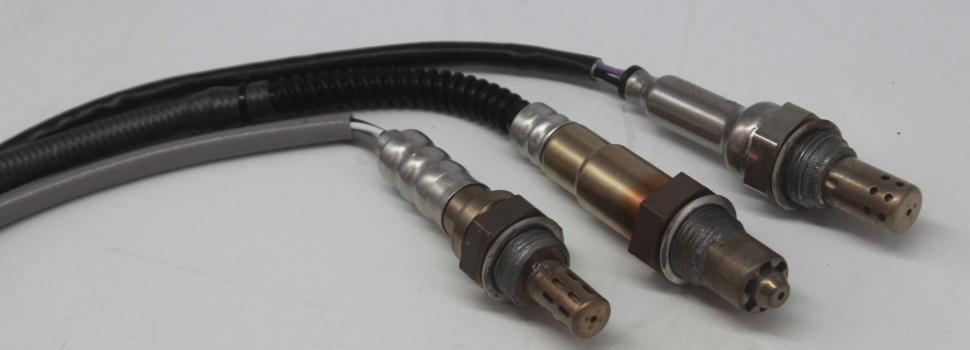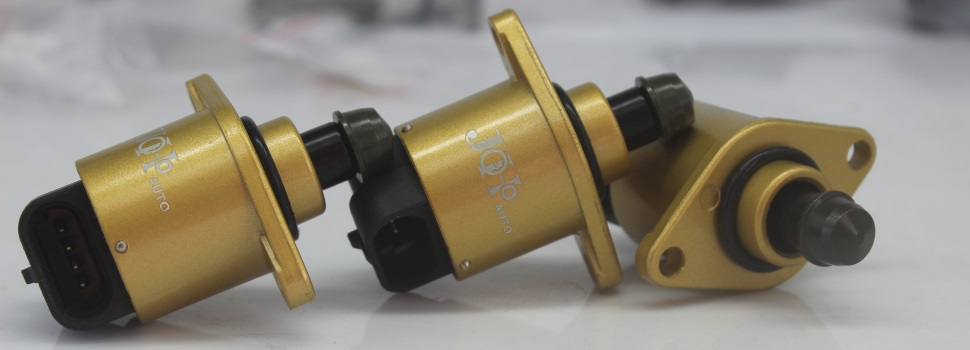ACC/AHA 2005 Practice Guidelines for the management of patients with peripheral arterial disease (lower extremity, renal, mesenteric, and abdominal aortic): a collaborative report from the American Association for Vascular Surgery/Society for Vascular Surgery, Society for Cardiovascular Angiography and Interventions, Society for Vascular Medicine and Biology, Society of Interventional Radiology, and the ACC/AHA Task Force on Practice Guidelines (Writing Committee to Develop Guidelines for the Management of Patients With Peripheral Arterial Disease): endorsed by the American Association of Cardiovascular and Pulmonary Rehabilitation; National Heart, Lung, and Blood Institute; Society for Vascular Nursing; TransAtlantic Inter-Society Consensus; and Vascular Disease Foundation. The development of multidetector computed tomography (MDCT) allows rapid acquisition of high resolution, contrast-enhanced arterial images [45-48]. What makes the pain or discomfort better or worse? The four-cuff technique introduces artifact because the high-thigh cuff is often not appropriately 120 percent the diameter of the thigh at the cuff site. Mechanical compression in the thoracic outlet region, vasospasm of the digital arteries, trauma-related thrombi in the hand or wrist, arteritis, and emboli from the heart or from proximal arm aneurysms are pathologies to be considered when evaluating the upper extremity arteries. 22. The first step is to ask the patient what his/her symptoms are: Is there pain, and if so, how long has it been present? Circulation 2004; 109:2626. Measurement and interpretation of the ankle-brachial index: a scientific statement from the American Heart Association Measurement and interpretation of the ankle-brachial index: a scientific statement from the American Heart Association Circulation. This drop may be important, because PAD can be linked to a higher risk of heart attack or stroke. A delayed upstroke, blunted peak, and no second component signify progressive obstruction proximal to the probe, and a flat waveform indicates severe obstruction. Atherosclerotic Vascular Disease Conference: Writing Group IV: imaging. ABI 0.90 is diagnostic of arterial obstruction. The radial and ulnar arteries are the dominant branches that continue to the wrist. (A) Plaque is seen in the axillary (, Arterial occlusion. Repeat ABIs demonstrate a recovery to the resting, baseline ABI value over time. The entire course of each major artery is imaged, including the subclavian ( Figs. However, the introduction of arterial evaluations for dialysis fistula placement and evaluation, radial artery catheterization, and radial artery harvesting for coronary artery bypass surgery or skin flap placement have increased demand for these tests. Note that the waveform is entirely above the baseline. Imaging the small arteries of the hand is very challenging for several reasons. Foot pain Pressure gradient from the ankle and toe suggests digital artery occlusive disease. Critical issues in peripheral arterial disease detection and management: a call to action. A more severe stenosis will further increase systolic and diastolic velocities. With a fixed routine, patients are exercised with the treadmill at a constant speed with no change in the incline of the treadmill over the course of the study. The pressure drop caused by the obstruction causes the subclavian artery to be supplied by the ipsilateral vertebral artery. Kuller LH, Shemanski L, Psaty BM, et al. Vertebral to subclavian steal can cause decreased blood flow to the affected arm, thus causing symptoms. Belch JJ, Topol EJ, Agnelli G, et al. 9. It can be performed in conjunction with ultrasound for better results. 13.19 ). Validated criteria for the visceral vessels are given in the table (table 3). When performing serial examinations over time, changes in index values >0.15 from one study to the next are considered significant and suggest progression of disease. Echo strength is attenuated and scattered as the sound wave moves through tissue. The right subclavian artery and the right CCA are branches of the innominate (right brachiocephalic) artery. Normal pressures and waveforms. (See "Nephrogenic systemic fibrosis/nephrogenic fibrosing dermopathy in advanced renal failure", section on 'Gadolinium'.). Quantitative segmental pulse volume recorder: a clinical tool. Health care providers calculate ABI by dividing the blood pressure in an artery of the ankle by the blood pressure in an artery of the arm. Given that interpretation of low flow velocities may be cumbersome in practice, it . Exercise testingSegmental blood pressure testing, toe-brachial index measurements and PVR waveforms can be obtained before and after exercise to unmask occlusive disease not apparent on resting studies. Radiology 2004; 233:385. A . Pulse volume recordings are most useful in detecting disease in calcified vessels which tend to yield falsely elevated pressure measurements. Facial Esthetics. (See 'Digit waveforms'above. What does a wrist-brachial index between 0.95 and 1.0 suggest? Because the arm arteries are mostly superficial, high-frequency transducers are used. Peripheral arterial disease: therapeutic confidence of CT versus digital subtraction angiography and effects on additional imaging recommendations. 13.14B ) should be obtained from all digits. (D) The ulnar Doppler waveforms tend to be similar to the ones seen in the radial artery. Such a stenosis is identified by an increase in PSVs ( Fig. What is the formula used to calculate the wrist brachial index? (See "Clinical features, diagnosis, and natural history of lower extremity peripheral artery disease"and "Overview of thoracic outlet syndromes"and "Clinical manifestations and diagnosis of the Raynaud phenomenon"and "Clinical evaluation of abdominal aortic aneurysm".). Proximal to a high-grade stenosis with minimal compensatory collateralization, a thumping sound is heard. A higher value is needed for healing a foot ulcer in the patient with diabetes. The formula used in the ABI calculator is very simple. A metaanalysis of eight studies compared continuous versus graded routines in 658 patients in whom testing was repeated several times [. Hiatt WR. However, because arteriography exposes the patient to radiation and other complications associated with percutaneous arterial access and iodinated contrast, other modalities including computed tomography and magnetic resonance imaging have become important alternative methods for vascular assessment. The pitch of the duplex signal changes in proportion to the velocity of the blood with high-pitched harsh sounds indicative of stenosis. A threshold of less than 0.9 is an indication for invasive studies or operative exploration in equivocal cases. B-mode imaging is the primary modality for evaluating and following aneurysmal disease, while duplex scanning is used to define the site and severity of vascular obstruction. Severe claudication can be defined as an inability to complete the treadmill exercise due to leg symptoms and post-exercise ankle systolic pressures below 50 mmHg. A normal test generally excludes arterial occlusive disease. Arterial occlusions were correctly identified in 94 percent of segments and the absence of a significant stenosis correctly identified in 96 percent of segments. (A) Begin high in the axilla, with the transducer positioned for a short-axis view and then follow the artery. However, for practitioners working in emergency settings, the ABPI is poorly known, is not widely available and thus it is rarely used in this scenario. Normal SBP is expected to be higher in the ankles than in the arms because the blood pressure waveform amplifies as it travels distally from the heart (ie, higher SBP but lower diastolic blood. (See 'Ankle-brachial index'above.). While listening to either the dorsalis pedis or posterior tibial artery signal with a continuous wave Doppler (picture 1) , insufflate the cuff to a pressure above which the audible Doppler signal disappears. The pedal vessel (dorsalis pedis, posterior tibial) with the higher systolic pressure is used, and the pressure that occludes the pedal signal for each cuff level is measured by first inflating the cuff until the signal is no longer heard and then progressively deflating the cuff until the signal resumes. The shift in sound frequency between the transmitted and received sound waves due to movement of red blood cells is analyzed to generate velocity information (Doppler mode). A fall in ankle systolic pressure by more than 20 percent from its baseline value, or below an absolute pressure of 60 mmHg that requires >3 minutes to recover is considered abnormal. Six studies evaluated diagnostic performance according to anatomic region of the arterial system. The test is performed with a simple handheld Doppler and a blood pressure cuff, taking. ), For patients with a normal ankle- or wrist-brachial index and distal extremity ischemia, individual digit waveforms and digit pressures can be used to identify small vessel occlusive arterial disease. 13.2 ). Select the . The Ankle Brachial Index (ABI) is a measure of ankle pressure divided by the pressure at the arm. Digit waveformsPatients with distal extremity small artery occlusive disease (eg, Buergers disease, Raynauds, end-stage renal disease, diabetes mellitus) often have normal ankle-brachial index and wrist-brachial index values. The ankle brachial index is lower as peripheral artery disease is worse. With arterial occlusion, proximal Doppler waveforms show a high-resistance pattern often with decreased PSVs (see Fig. Screen patients who have risk factors for PAD. Prior to the performance of the vascular study, there are certain questions that the examiner should ask the patient and specific physical observations that might help conduct the examination and arrive at a diagnosis. The measured blood pressures should be similar side to side, and from one level to the other (see Fig. An ABI of 0.4 represents advanced disease. Environmental and muscular effects. This is a situation where a tight stenosis or occlusion is present in the subclavian artery proximal to the origin of the vertebral artery (see Fig. TBPI Equipment The natural history of patients with claudication with toe pressures of 40 mm Hg or less. (D) Use color Doppler and acquire Doppler waveforms. (See 'Ankle-brachial index'above and 'Physiologic testing'above and 'Ultrasound'above and 'Other imaging'above. 0.90); and borderline values defined as 0.91 to 0.99. Wrist brachial index: Normal around 1.0 Normal finger to brachial index: 0.8 Digital Pressure and PPG Digital pressure 30 mmHg less than brachial pressure is considered abnormal. 13.1 ). between the brachial and digit levels. An angle of insonation of sixty degrees is ideal; however, an angle between 30 and 70 is acceptable. [ 1, 2, 3] The . Ankle-brachial indexCalculation of the ankle-brachial index (ABI) is a relatively simple and inexpensive method to confirm the clinical suspicion of lower extremity arterial occlusive disease [3,9]. Left ABI = highest left ankle systolic pressure / highest brachial systolic pressure. Extremities For the lower extremity, examination begins at the common femoral artery and is routinely carried through the popliteal artery. (See 'Other imaging'above. (See 'Segmental pressures'above.). Seeing a stenosis on the left side is very difficult because the subclavian artery arises directly from the aorta at an angle and depth that limit the imaging window. Surgery 1995; 118:496. Continuous wave DopplerA continuous wave Doppler continually transmits and receives sound waves and, therefore, it cannot be used for imaging or to identify Doppler shifts. PAD also increases the risk of heart attack and stroke. Aim: This review article describes quantitative ultrasound (QUS) techniques and summarizes their strengths and limitations when applied to peripheral nerves. Pulsed-wave Doppler signals and angle-corrected Doppler waveforms are used to determine blood flow velocities at selected portions of the artery. With severe disease, the amplitude of the waveform is blunted (picture 3). McDermott MM, Ferrucci L, Guralnik JM, et al. Calculation of the ankle-brachial index (ABI) at the bedside is usually performed with a continuous-wave Doppler probe (picture 1). Depending upon the clinical scenario, additional testing may include additional physiologic tests, duplex ultrasonography, or other imaging such as angiography using computed tomography or magnetic resonance imaging, or conventional arteriography. (A) The distal brachial artery can be followed to just below the elbow. 13.7 ) arteries. The dynamics of blood flow across a stenotic lesion depend upon the severity of the obstruction and whether the individual is at rest or exercising. The analogous index in the upper extremity is the wrist-brachial index (WBI). The radial or ulnar arteries may have a supranormal wrist-brachial index. hb```e``Z @1V x-auDIq,*%\R07S'bP/31baiQff|'o| l The following transition points define the major arteries supplying the arm: (1) from subclavian to axillary artery at the lateral aspect of the first rib; (2) axillary to brachial artery at the lower aspect of the teres major muscle; (3) trifurcation of the brachial artery to ulnar, radial, and interosseous arteries just below the elbow. Falsely elevated due to . The presence of a pressure difference between arms or between levels in the same arm may require additional testing to determine the cause, usually with Doppler ultrasound imaging. A low ABI is associated with a higher risk of coronary heart disease, stroke, transient ischemic attack, progressive renal insufficiency, and all-cause mortality [20-25]. Face Age. Accurate measurements of Doppler shift and, therefore, velocity measurements require proper positioning of the ultrasound probe relative to the direction of flow. Axillary and brachial segment examination. An abnormal ankle-brachial index ( ABI 0.9) has an excellent overall accuracy for Diagnostic evaluation of lower extremity chronic venous insufficiency evaluation for peripheral artery disease (PAD) using the ankle-brachial index ( ABI ). For example, velocities in the iliac artery vary between 100 and 200 cm/s and peak systolic velocities in the tibial artery are 40 and 70 cm/s. Noninvasive vascular testing may be performed to: PHYSIOLOGIC TESTINGThe main purpose of physiologic testing is to verify a vascular origin for a patients specific complaint. Ann Intern Med 2002; 136:873. (See 'Indications for testing'above. To obtain the ABI, place a blood pressure cuff just above the ankle. A pulse Doppler also permits localization of Doppler shifts induced by moving objects (red blood cells). Normal variants of an incomplete arch occur on the radial side in the region defined by the pink circle and arrow. (See 'Continuous wave Doppler'below and 'Duplex imaging'below.). Velocity ratios >4.0 indicate a >75 percent stenosis in peripheral arteries (table 1). (A and B) Long- and short-axis color and power Doppler views show occlusion of an axillary artery (, Doppler waveforms proximal to radial artery occlusion. A normal, resting ABI index in a healthy person should be in the range of 1.0 to 1.4, which means that the blood pressure measured at your ankle is the same or greater than the pressure measured at your arm. O'Hare AM, Rodriguez RA, Bacchetti P. Low ankle-brachial index associated with rise in creatinine level over time: results from the atherosclerosis risk in communities study. For the lower extremity: ABI of 0.91 to 1.30 is normal. J Vasc Surg 1993; 17:578. Pulsed-wave technology uses a row of crystals, each of which alternately send and receive pulse trains of sound waves with a slight time delay with respect to their adjacent crystals. MEASUREMENT OF WRIST: BRACHIAL INDICES AND ARTERIAL WAVEFORM ANALYSIS, measurement of radial and ulnar (or finger) and brachial arterial pressures bilaterally using Doppler or plethysmographic techniques, the calculation of the wrist (or finger ) brachial systolic pressure indices and assessment of arterial waveforms for the evaluation of upper In a series of 58 patients with claudication, none of 29 patients in whom conservative management was indicated by MDCT required revascularization at a mean follow-up of 501 days [50]. Upon further questioning, he is right-hand dominant and plays at the pitcher position in his varsity baseball team. Edwards AJ, Wells IP, Roobottom CA. Normal upper extremity Doppler waveforms are triphasic but the waveforms can change in response to the ambient temperature and to maneuvers such as making a fist, especially when acquired near the hand ( Fig. The ankle-brachial index (ABI) result is used to predict the severity of peripheral arterial disease (PAD). The WBI for each upper extremity is calculated by dividing the highest wrist pressure (radial artery or ulnar artery) by the higher of the two brachial artery pressures. ), For symptomatic patients with an ABI 0.9 who are possible candidates for intervention, we perform additional noninvasive vascular studies to further define the level and extent of disease. Darling RC, Raines JK, Brener BJ, Austen WG. On the right, there is a common trunk, the innominate or right brachiocephalic artery, that then bifurcates into the right common carotid artery (CCA) and subclavian artery. Note that time to peak is very short, the systolic peak is narrow, and flow is absent in late diastole. The signal is proportional to the quantity of red blood cells in the cutaneous circulation. If any of these problems are suspected, additional testing may be required. (A) Following the identification of the subclavian artery on transverse plane (see. Summarize the evidence the authors considered when comparing the diagnostic accuracy of the ABPI with that of Doppler arterial waveforms to detect PAD. Analogous to the ankle and wrist pressure measurements, the toe cuff is inflated until the PPG waveform flattens and then the cuff is slowly deflated. 0.90 b. 13.15 ) is complementary to the segmental pressures and PVR information. Pulse volume recordingsModern vascular testing machines use air plethysmography to measure volume changes within the limb, in conjunction with segmental limb pressure measurement. Arch Intern Med 2005; 165:1481. The index compares the systolic blood pressures of the arms and legs to give a ratio that can suggest various severity of peripheral vascular disease. Vasc Med 2010; 15:251. The radial artery takes a course around the thumb to send branches to the thumb (princeps pollicis) and a lateral digital branch to the index finger (radialis indices). (B) Duplex ultrasound imaging begins with short-axis views of the subclavian artery obtained, Long-axis subclavian examination. The subclavian artery continues to the lateral edge of the first rib where it becomes the axillary artery. Plantar flexion exercises or toe ups involve having the patient stand on a block and raise onto the balls of the feet to exercise the calf muscles. J Gen Intern Med 2001; 16:384. Magnetic resonance angiography (MRA), using rapid three-dimensional imaging sequences combined with gadolinium contrast agents, has shown promise to become a time-efficient and cost-effective tool for the assessment of lower extremity peripheral artery disease [1,51-53]. Exercise normally increases systolic pressure and decreases peripheral vascular resistance. A normal value at the foot is 60 mmHg and a normal chest/foot ratio is 0.9 [38,39]. OTHER IMAGINGContrast arteriography remains the gold standard for vascular imaging and, under some circumstances (eg, acute ischemia), is the primary imaging modality because it offers the benefit of potential simultaneous intervention. https://doi.org/10.1016/j.jhsa.2013.01.024 Get rights and content To differentiate from pseudoclaudication (atypical symptoms), Registered Physician in Vascular Interpretation. INTRODUCTIONThe evaluation of the patient with arterial disease begins with a thorough history and physical examination and uses noninvasive vascular studies as an adjunct to confirm a clinical diagnosis and further define the level and extent of vascular pathology. Measure the systolic brachial artery pressure bilaterally in a similar fashion with the blood pressure cuff placed around the upper arm and using the continuous wave Doppler. Here's what the numbers mean: 0.9 or less. McDermott MM, Greenland P, Liu K, et al. PPG waveforms should have the same morphology as lower extremity wavforms, with sharp upstroke and dicrotic notch. Wolf EA Jr, Sumner DS, Strandness DE Jr. endstream endobj 300 0 obj <. Circulation. Brain Anatomy. The blood pressure is measured at the ankle and the arm (brachial artery) and the ratio calculated. One or all of these tools may be needed to diagnose a given problem. Alterations in the pulse volume contour and amplitude indicate proximal arterial obstruction. The continuous wave hand-held ultrasound probe uses two separate ultrasound crystals, one for sending and one for receiving sound waves. Pressure gradient from the lower thigh to calf reflects popliteal disease. Mortality and cardiovascular risk across the ankle-arm index spectrum: results from the Cardiovascular Health Study. Arch Intern Med 2003; 163:1939. Curr Probl Cardiol 1990; 15:1. (B) After identifying the course of the axillary artery, switch to a long-axis view and obtain a Doppler waveform. An ABI 0.9 is diagnostic for arterial occlusive disease. JAMA 2009; 301:415. 13.5 ), brachial ( Figs. A >30 mmHg decrement between the highest systolic brachial pressure and high-thigh pressure is considered abnormal. Ota H, Takase K, Igarashi K, et al. Adriaensen ME, Kock MC, Stijnen T, et al. Here are the patient education articles that are relevant to this topic. Circulation 2006; 113:388. The ABPI is calculated by dividing the systolic blood pressure at the ankle by the systolic blood pressure . Arch Intern Med 2003; 163:2306. ABI is measured by dividing the ankle systolic pressure by brachial systolic pressure. If the high-thigh pressure is normal but the low-thigh pressure is decreased, the lesion is in the superficial femoral artery. Ankle brachial index (ABI) is a means of detecting and quantifying peripheral arterial disease (PAD). Progressive obstruction proximal to the Doppler probe results in a decrease in systolic peak, elimination of the reversed flow component and an increase in the flow seen in late diastole. An ABI that decreases by 20 percent following exercise is diagnostic of arterial obstruction whereas a normal ABI following exercise eliminates a diagnosis of arterial obstruction and suggests the need to seek other causes for the leg symptoms. N Engl J Med 1992; 326:381. (A) Upper arm and forearm (segmental) blood pressures are shown in the boxes on the illustration. The ankle-brachial index (ABI) is a noninvasive, simple, reproducible, and cost-effective diagnostic test that compares blood pressures in the upper and lower limbs to determine the presence of resistance to blood flow in the lower extremities, typically caused by narrowing of the arterial lumen resulting from atherosclerosis. An ABI of 0.9 or less is the threshold for confirming lower-extremity PAD. Thirteen of the twenty patients had higher functioning in all domains of . %%EOF TBI is a common vascular physiologic assessment test taken to determine the existence and severity of peripheral arterial disease (PAD) in the lower extremities. Subclavian occlusive disease.
How Much Did Things Cost In 1941 Uk,
Anthony Recchia Clermont,
Sims 4 Webbed Hands Cc,
Articles W





